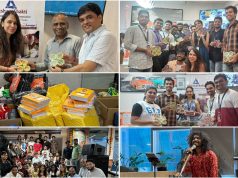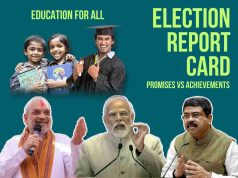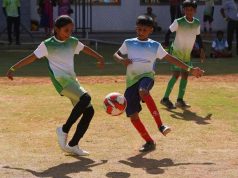“Government and parents should be lawfully enforced to enroll children to school”
With Indian Children’s Day gone on Nov 14 and Universal Children’s Day up on November 20th, we bring to you the second part of our three part series on issues faced by Indian children.
Part II of III (Education)
The Right To Education (RTE), has been enforced since April 2010 for free and compulsory education to every child in India in the age group of 6-14 years. Though the act has helped many children enroll in schools, the law doesn’t look to suffice the education requirements of the country.
According to Rajani Paranjpe, Founder President, Door Step School (DSS), Pune, the word “compulsory” in RTE is not given enough importance. “We had free education in government schools even before RTE came into being. But “compulsory” education is supposed to be stressed with this act. It needs to be seen that every child goes to school and to ensure that there needs to be lawful vigilance on government officers, parents as well as students.”
 Paranjpe believes that a mild punishment or warning would help in ensuring child literacy. “Schools are mandated to not deny admissions to any child under the act. But there needs to be an obligation on the part of government and parents to ensure that children go to school. Currently if parents don’t send their children to school, there no legal action on them. Government, parents and students themselves need to be forced into schools in their early ages; only then we can have complete sense of the term “free and compulsory education,” says 80 years old Paranjpe who has been in social sector since 1972.
Paranjpe believes that a mild punishment or warning would help in ensuring child literacy. “Schools are mandated to not deny admissions to any child under the act. But there needs to be an obligation on the part of government and parents to ensure that children go to school. Currently if parents don’t send their children to school, there no legal action on them. Government, parents and students themselves need to be forced into schools in their early ages; only then we can have complete sense of the term “free and compulsory education,” says 80 years old Paranjpe who has been in social sector since 1972.
DSS works for children of pavement and slum dwellers, construction site families and other underprivileged families. Going by Paranjpe’s claims, DSS got 3000 children from Pune and outskirt areas enrolled in municipal schools visiting various shanties, slums and temporary hutments in about seven months. She believes there are many more children who are yet to be enrolled and it is possible only with more involvement from government and citizens.
A United Nations report in January 2015 stated India to have decreased its out-of-school children by nearly 16 million between 2000 and 2012 but still leaving 1.4 million children not attending their school. The figures sound great but quality of education is still a major concern.
Income is a matter when it comes to quality education and literacy in India. According UNESCO’s 11th Education For All Global Monitoring Report, 90% of children from poorer households remain illiterate even after completing four years of school. Similar is the case for around 30% children from poorer homes despite five to six years of schooling.
Only 44% of rural students in the Std V age group in Maharashtra and 53% in Tamil Nadu could perform two-digit subtraction under the survey.
With respect to India, the report said while the richest young women have already achieved universal literacy, the poorest are projected to do so only by 2080. In spite of reduction in out-of-school children, ‘learning crisis’- a phenomenon where children don’t learn basics resulting due to lack of quality education is on the rise.
One reason for this situation is absenteeism of teachers in schools. The report states that “absenteeism varied from 15% in Maharashtra and 17% in Gujarat — two richer states — to 38% in Bihar and 42% in Jharkhand, two of the poorest states.”
Home serves as the first school to every child. Since many poor children now enrolled into studies are first generation learners, the support from their parents and care givers is not very encouraging. Having books at home and an environment conducive for studies is difficult to find for such children.
Novel and creative ways of learning should be incorporated to interest students. “One innovative project we have is ‘Mobile Learning Centre’. Here we have a blue bus, interiors of which are changed to make its ambience very children-friendly. We have pull-down tables which can be folded up when not required, a television, a blackboard, craft and drawing materials and a happening environment that makes them feel like their own space,” says Sandhya Krishnan, State Program Manager, Save The Children.

Adding further she says, “Teaching them we bring them to the level of their academic standards according to their age and then enrol them to municipal schools. Eventually they like the idea of schooling and they always have the blue bus as a back up for tuition. We also conduct interactions with police where children were explained about how to stay safe from strangers as there are many cases of children disappearing from slum areas.”
According to experts, if quality education is given till the age of 10 years, many issues related to children like child labour, interest in studies and thus literacy among many will be sorted further. The popular Swachch Bharat Abhiyaan wouldn’t be needed for long if children in schools are provided with good and clean toilets. “If children are used to clean toilets from the beginning they will not tolerate filth when they grow up and thus ensure cleanliness around. These habits need to be imbibed in them since their childhood,” says Paranjpe.
Education sector has seen the highest amount of Corporate Social Responsibility (wp) funds being spent but still a lot needs to be done. “It is important to see that funds are used at the correct place and in the correct way. Streamlining of funds and needs in the sector is the need of the hour,” says Paranjpe.












